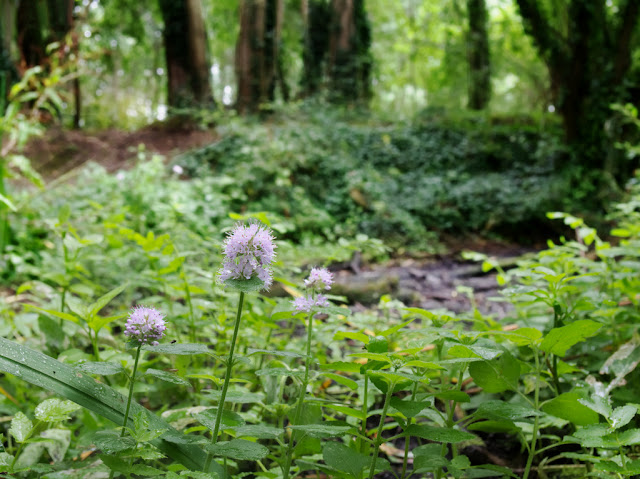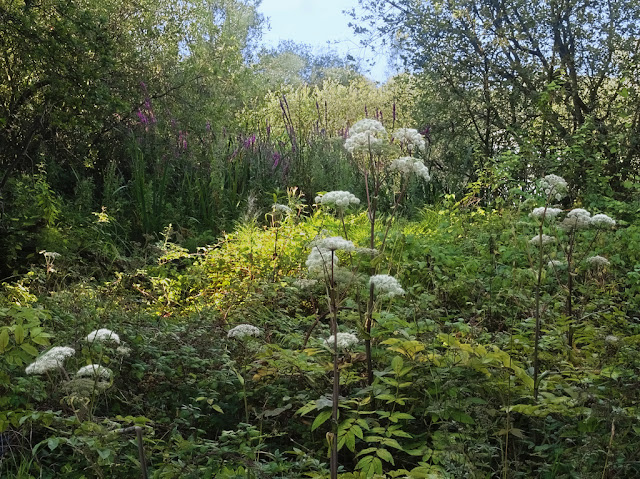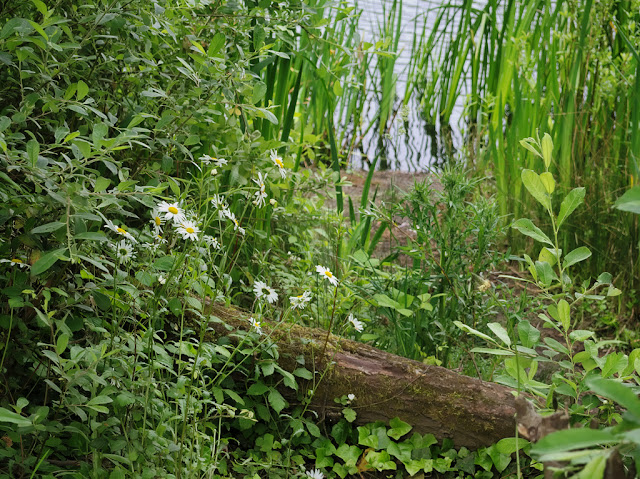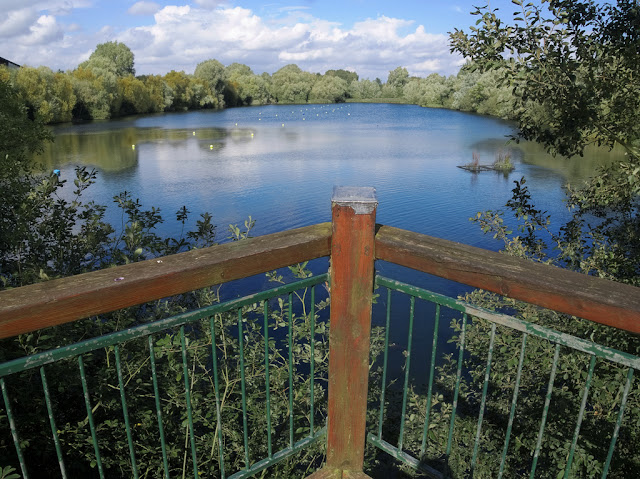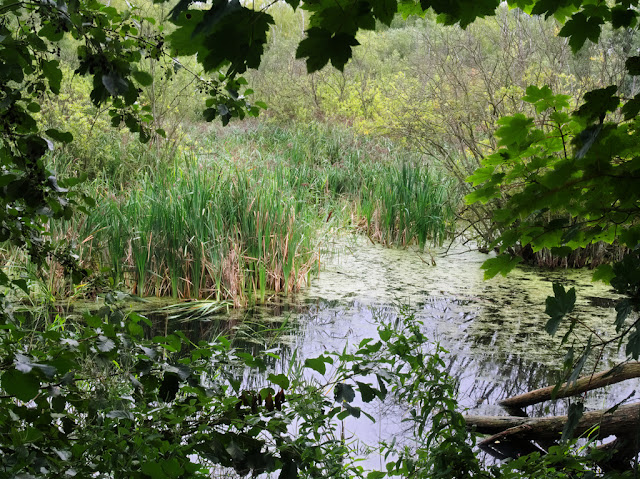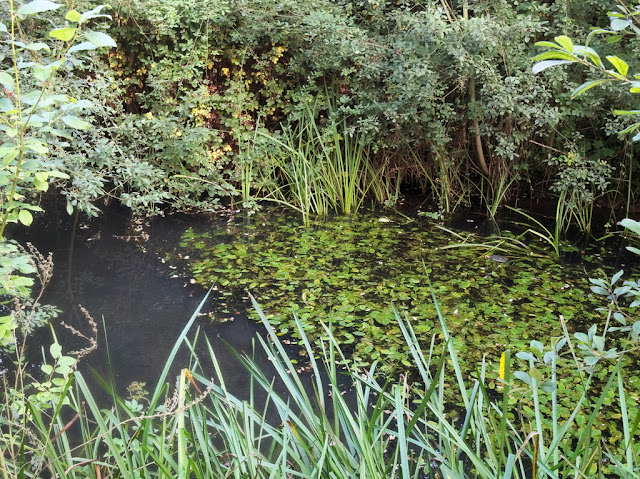 |
| North of Deep Water - 9 August 2015 |
One such noteworthy flower was this clump of soapwort nestling at the base of some bushes surrounding the grassland to the north of Deep Water. Like many things, once seen it was hard to miss on subsequent visits.
At the Water's Edge
 |
| Hall's Pond - 30 July 2015 |
My next three flowers all were found growing at the water's edge. The first is meadowsweet seen here growing on the banks of Hall's Pond. The name meadowsweet may have nothing to do with the meadow, but is a corruption of mead sweet, referring to its use in flavouring mead. The plant's main claim to fame is as a source of salicin which was subsequently synthesised into Aspirin in the late 19th century; the name Aspirin is derived from the old latin name for this flower: Spiraea ulmaria.
 |
| Dickerson's Pit Jetty - 6 August 2015 |
I have already shown a picture of water mint, but I think these growing among the reeds at the end of the jetty on Dickerson's Pit were so pretty that they deserved publication.
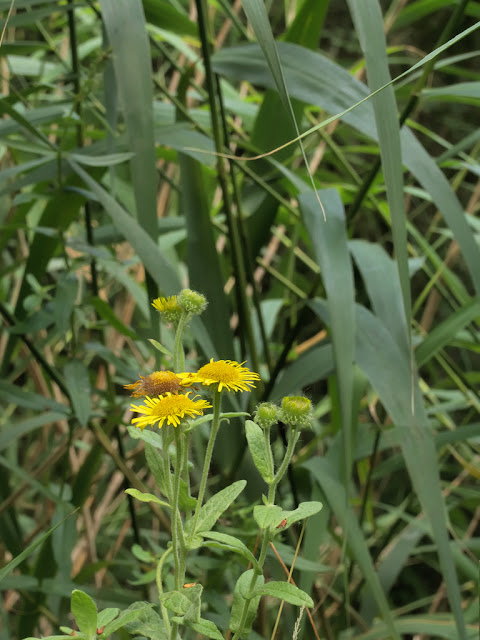 |
| Todd's Pit - 17 August 2015 |
The final flower in this trio is common fleabane which can be found growing in the damp margins of the pits in the park. This image was taken in one of the small inlets off the north bank of Todd's Pit, where it was growing among the reeds along with greater willow herb and purple loosestrife.
Easily Overlooked
 |
| Access Road - 28 August 2015 |
Far more easily overlooked than any of the flowers so far mentioned is wild basil. This plant, growing only a few inches high, was off the beaten track on the access road that runs behind the toilets.
 |
| South Path - 4 August 2015 |
Low growing and never forming a large confluent mass, the clumps of yarrow scattered around the park easily escape notice. This intimate landscape illustrates the fertility of the soil in the park. Despite rich soil lacking the biodiversity of the poorer grassland of, for instance, chalk downland, in the space of a couple of very
crowded square metres shown here, there are at least five different species of plant.
White Dead Nettle
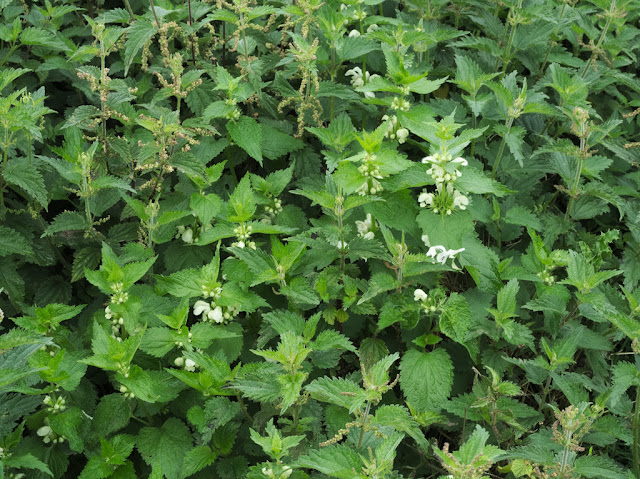 |
| South of Park - 16 August 2015 |
White dead nettle seems to be one of those plants that flower all summer long if not longer. At the time I took this photograph in the meadow at the south of the park, this was an isolated clump which attracted my attention for the way it was completed surrounded by stinging nettles. Subsequently, white dead nettle has become a lot more noticeable in the area with a lot more of these plants, which seem to have become more conspicuous somehow, as if the stinging nettles have grown shorter.
Blogs and Books
In a former life as a research scientist, I would have started any project such as this blog with a literature search to find out what others were doing in my chosen field. With the carefree attitude of age I plunged straight in to writing this blog without any reference at all to other blogs. Over the last six months, I have started to read both blogs and printed books that are of potential relevance. So seven months and twenty posts later, I have started a list of blogs that I am reading to the home page of this site. Blogger does not seem to offer me a good way of listing books, so I have also added a page of further reading including both blogs and books.My first two blogs are both finished and their authors have moved on to other blogs. Nevertheless, I think both are well worth the visit.
Fen-edge encounters is highly relevant and very local, as it documents the landscape, wildlife and occasionally people to be met rambling around Oakington. It is almost completely text, but none the worse for that.
Boxmoor, naturally The author is a volunteer on the Boxmoor estate and the blog documents, in text and photographs, the wildlife and landscape on the estate for a year. This blog really does underline how much can be seen in a relatively small area for anyone prepared to look.
The first book on my list is also testimony to the amount of wildlife that can be found in a small area. Meadowland: the private life of an English field by John Lewis-Stempel is the account of one year in a single English meadow complete with badgers, foxes, rabbits and moles. I find it hard to believe that such variety could be found in a single field in the over-farmed fens.
Next: Water Weed
